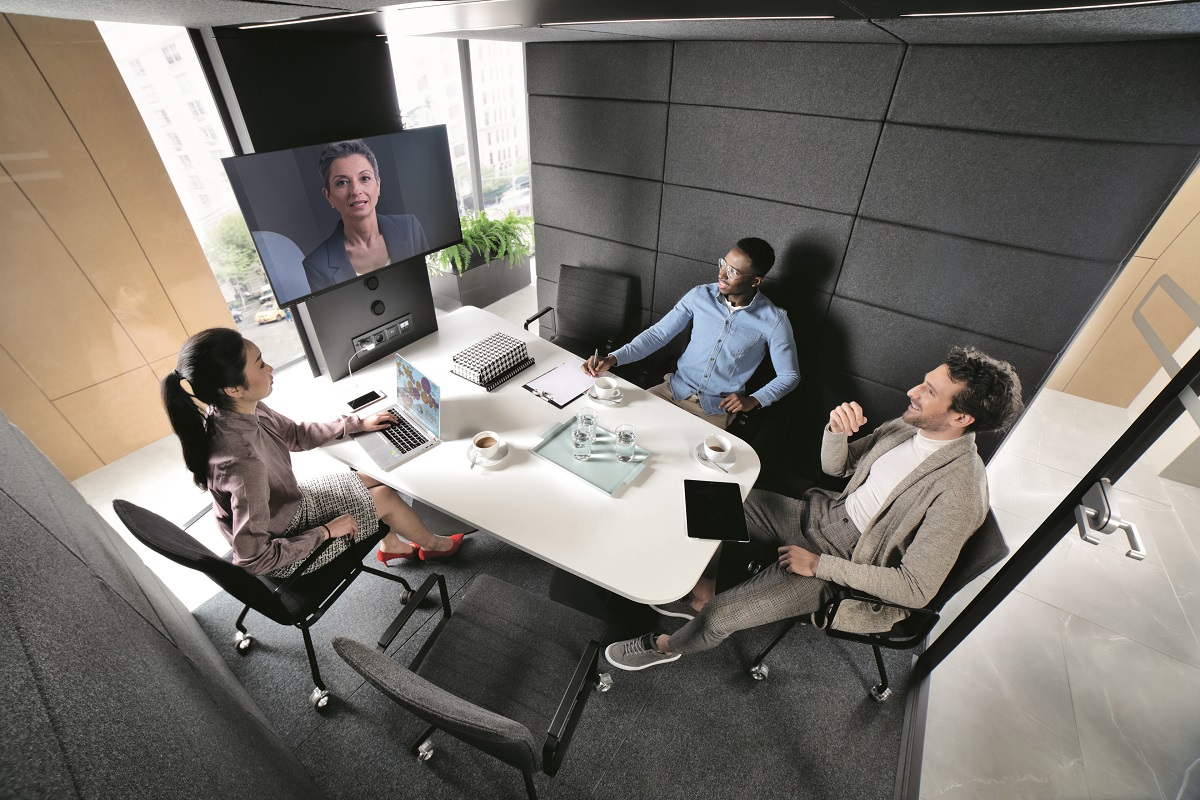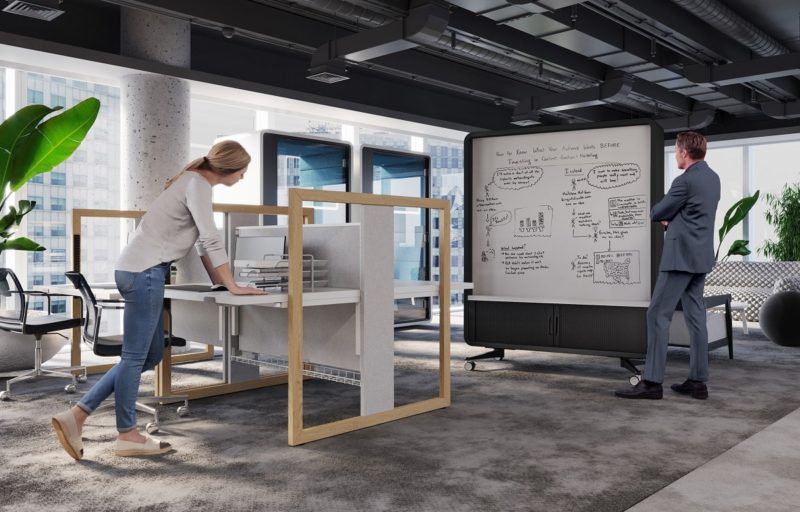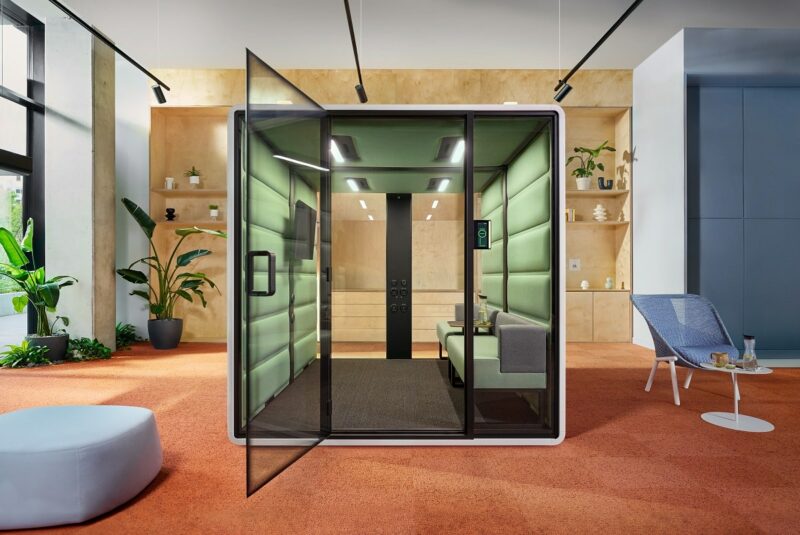Managing a distributed team
- Posted on: 10 July 2023
- By: Hushoffice Team
One of the challenges of managing distributed team is to provide a cohesive, productive work environment regardless of physical distance. Communication barriers must be eliminated and a coherent vision should be outlined. There are a few key principles that can help reach these goals!
Managing a distributed team – tl;dr
A distributed team consists of employees who work together but in different locations. Sometimes, they may never even work together in the same office.
Hiring a distributed team has a few major advantages: it allows you to attract talent from any place in the world, enhance your intercultural skills, and optimise business.
Key challenges that need to be addressed include team building, communication, engagement and a feeling of isolation. Hushoffice pods provide on-site employees with quiet, easy-to-access spaces to focus and meet regularly with their remote-working colleagues.
What is the definition of a distributed team?
A distributed team consists of employees who work together but in different locations, sometimes changing countries, sometimes even continents. It may take many forms, but the bottom line is that such teams don’t have a shared central office.
What makes distributed, remote, and hybrid teams different is the role of the office.
Hybrid teams are obliged to work in the office for a particular number of weekdays whereas remote teams are given full flexibility as to wherever they work each day and are let to come and go as they prefer. When it comes to a distributed team, the office is not required at all.
In the process of building a distributed team, the priority for the employer is not to bring new energy into the office, but to hire individuals with appropriate expertise in a particular niche. Thus a lot of distributed teams collaborate without ever co-working in the same physical space. As they don’t often, if ever, work in the office, it is crucial that supervisors who manage members of such virtual teams are provided with private, focused spaces in the workplace, such as hushWork.sit&stand. To connect via call or video conference with remote-working peers, they need quiet spaces where interruptions are blocked out, letting them focus on relevant discussions with distant colleagues
– says Mateusz Barczyk, Senior Brand Manager, Hushoffice.

Although they are not present physically, distributed teams can be engines of organisational productivity.
It comes as no surprise that some of the world’s most successful companies follow a fully distributed model. Remote employees can boast amazing self-discipline and are frequently self-starters – they may take a nascent idea and develop it further. So, although their presence is not physically felt, they can have a powerful impact on a team. There are a lot of reasons for building a distributed team.
In some cases, organisations may decide on a hybrid schedule for the majority of their workers but enable specific teams, like the application development or other specialised teams, to work flexibly in a fully distributed way – without ever gathering in an office. This attitude works well as it meets the special requirements of particular teams, making a company leverage the advantages of remote work and maximise talent acquisition for some niche skill sets
– says Mateusz Barczyk, Senior Brand Manager, Hushoffice.
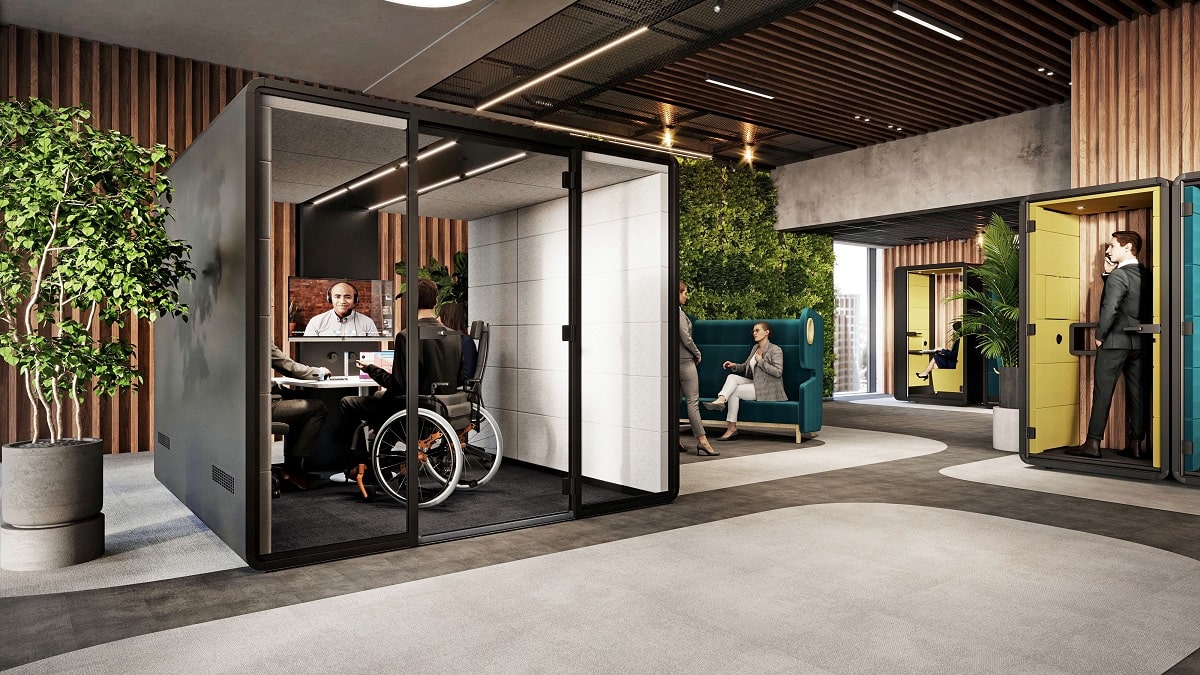
1. Wider geographic reach and better access to specialised skill sets
Removing geographical barriers means that you can attract talent from all over the world. Commuting distance is no longer a limitation and you can spread your net wide, capturing talent with specialist knowledge of a particular industry or with niche skills – talent which might be rare or sought-after.
2. Reduced hiring barriers
Remote work scheme attracts top talent who may be reluctant or unable to relocate for office-based opportunities. Embracing remote work for specific posts allows you to fish a bigger pool of prospects and gain access to most talented individuals.
3. Global perspectives and cultural intelligence
Distributed teams are frequently multicultural. Their mix of paradigms contributes to more multifaceted problem-solving. For businesses operating in international markets or trying to expand their worldwide footprint, any kind of intercultural fluency is an advantage.
4. Around-the-clock productivity
When employees work in different time zones, teams can achieve 24/7 productivity. This may result in faster turnround times, steady progress on projects, and more available customer support.
5. Business continuity
Distributed teams are more resilient to disruptions such as natural disasters. When team members don’t rely on one particular work location, you can operate continuously even under difficult circumstances.
What makes managing distributed teams challenging?
Although the distributed team model has numerous benefits, it also poses real challenges that managers and supervisors need to tackle.
Engagement and communication…
Engagement tends to be a tricky question for a physically disjointed team that relies only on virtual communication. It is crucial that the workplace have well-designed video meeting and phone call spaces that enable on-site employees to meet with remote colleagues easily, maintaining their strong focus.
Tonal inflections. Intentional changes in the pace of speech. Exceptional intonation. All the delicate, tiny details – the essence of effective telephone conversations. The essence that may be lost in translation during calls that take place in a noisy office space. Thus managers of distributed teams must be provided with private call pods, such as hushPhone – pods that reduce background noise and improve speech intelligibility to ensure strong connection and smooth communication on every single call with remote employees. Regardless of physical distance, everyone is involved
– says Mateusz Barczyk, Senior Brand Manager, Hushoffice.
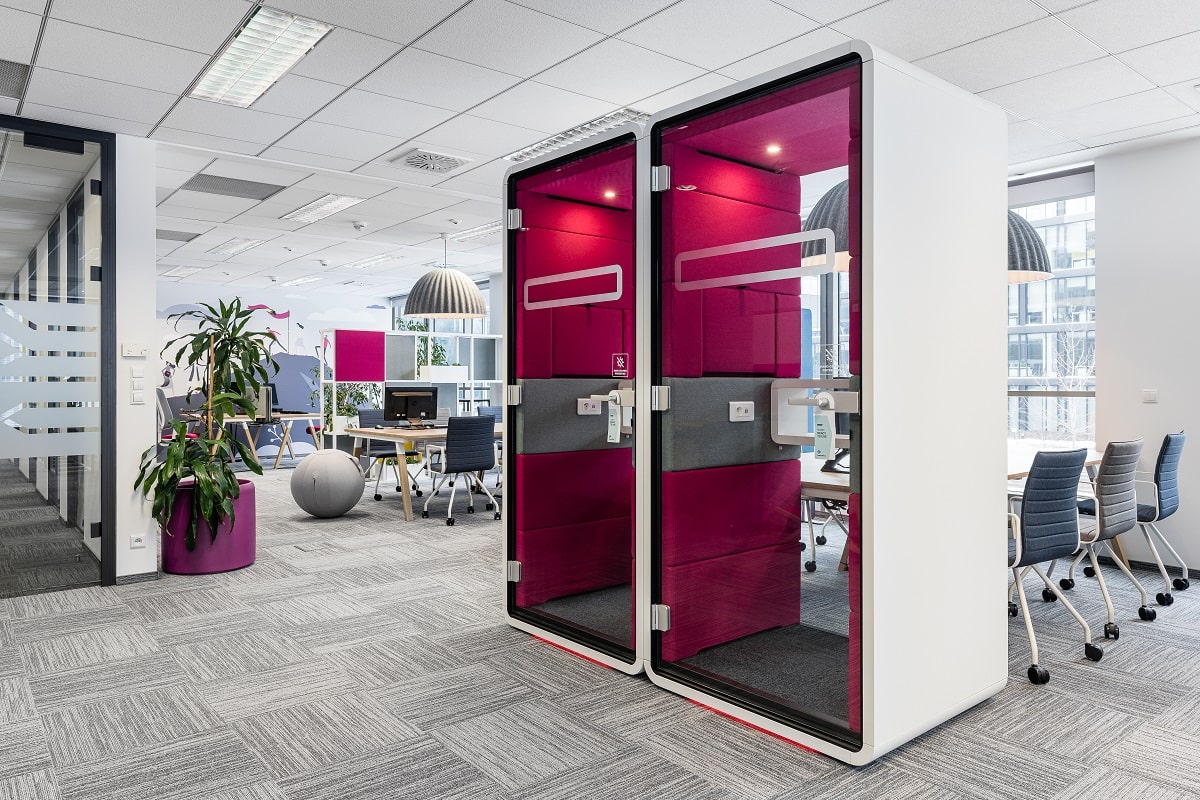
A sense of isolation and loneliness…
30% of remote employees struggle with a sense of loneliness. The lack of daily face-to-face interactions and chance social encounters may be really alienating. It may undermine people’s sense of belonging and motivation.
Good news is that video calls may decrease the feeling of loneliness and social isolation.
Due to their visual aspect, a sense of real presence is created. Thus, if you are overseeing or considering a distributed team model, you should work on improving these visual aspects. Introduce professional video call spaces, such as hushHybrid, to your workspace and provide remote colleagues with top-notch laptop video lights.
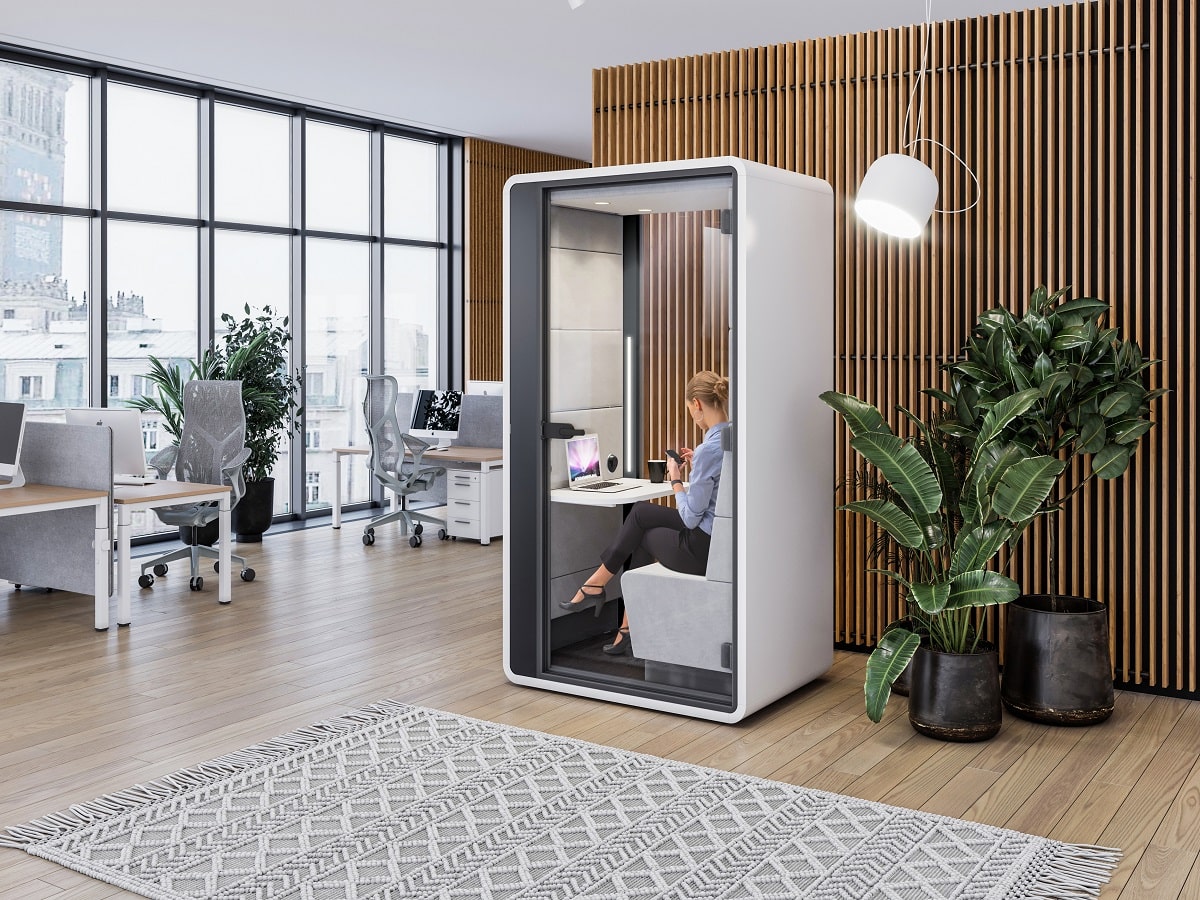
Most remote workers would rather have their camera on during video calls.
According to them, communication is much easier when you can see other people’s facial expressions. This preference means that the majority of workers now go for video meetings. So present-day offices aren’t fit for today’s employees if they do not provide professional video call spaces.
Team training and trust-building
Practical guidance and direct feedback are not easy to provide virtually. Remote employees don’t get an opportunity to observe and interact with their peers face-to-face. It may have an influence on their learning experience. Also, lack of physical presence may result in lower motivation and focus. 75% of remote employees spend a quarter of their working week in meetings.
Remote workers spend a significant part of their working week in meetings, so it’s really important to provide them with perfect meeting spaces in their offices. For example, hushMeet.L is a private space where in-office colleagues can have meetings with the remote ones without being interrupted. As a result, team training can find a rhythm, and teams achieve natural synergy in spite of the virtual character of their cooperation
adds Mateusz Barczyk, Senior Brand Manager, Hushoffice.
Day-to-day communication and frequent meetings build team identity.
For 71% of teams with remote employees the best way to stay connected are one-on-one meetings. Unsurprisingly, as employees who get 50% more one-on-ones with their manager are 67% less likely to be disengaged. A pod such as hushHybrid is a perfect space for such essential virtual connections. Private, and silent, hushHybrid is a comfortable choice for both parties.
Video calls contribute to more balanced discussions and more dynamic brainstorming.
As we are visual creatures. we feel more engaged when we see a person’s face. Expressions convey emotions and attitudes and are a rich source of information themselves. Hand gestures, different body movements, and eye contact all contribute to a more successful conversation, as well.
Quiet and calm, Hushoffice pods produce a metaphorical echo of virtual engagement.
Engagement may reverberate between individuals. When a person invests their energy into another, attentiveness echoes back and it’s the essence of successful collaboration. Private, quiet and minimalist, Hushoffice pods create a stimulating environment where the initial focus encourages this reciprocal flow.
Managing distributed team – summary
A distributed team consists of employees who work together but in different locations. Sometimes, they may never even work together in the same office.
Hiring a distributed team has a few major advantages: it allows you to attract talent from any place in the world, enhance your intercultural skills, and optimise business.
Key challenges that need to be addressed include team building, communication, engagement and a feeling of isolation. Hushoffice pods provide on-site employees with quiet, easy-to-access spaces to focus and meet regularly with their remote-working colleagues.
Managing distributed team – frequently asked questions
What kind of team can be a distributed team?
A good example of a distributed team may be software development teams that are working on projects for technology companies. Although team members can be based in different cities or countries, they collaborate remotely in order to design, develop, and test the software. To communicate and manage their work, they use numerous collaboration tools, like project management software or different video conferencing and instant messaging applications. In spite of being physically distant, they collaborate to deliver the software product.
What challenges do distributed teams face?
Frequent challenges involve engagement, communication, a sense of loneliness and effective team training. Using Hushoffice acoustic pods, you can provide on-site workers with private, soundproof spaces to meet with their remote colleagues without being distracted.
What can I do to update my office for a distributed team?
As video calls are a key form of communication for a distributed team, you need to equip your office with top-quality video call spaces, such as Hushoffice pods. Additionally, you should provide remote employees with premium laptop clip-on video lights to boost your team’s success.
